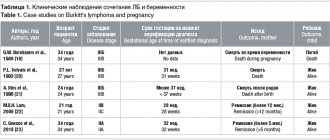Lymphoma (lympholiferative process) is a group of oncological processes affecting lymphocytes (cells of the immune system), which are accompanied by changes in the lymph nodes and blood vessels. In this case, metastasis can occur - migration of malignant cells to neighboring organs and tissues with the formation of secondary foci of cancer. Enlarged nodes in lymphoma (> 1 cm in diameter) are dense and completely painless, so the detection of the disease at an early stage is relatively low. In this article we will tell you what types of lymphomas there are, about the symptoms that should alert you, and about the visualization of pathological changes on CT.
Pulmonary lymphoma - what is it?
The lymphatic system of the lungs resembles a branched tree - its vessels penetrate the entire length of the chest and are responsible for lymph flow. There are 13 types of lymph nodes, classified into 5 groups:
1.Supraclavicular lymph nodes;
2.Upper medial lymph nodes (paratracheal, prevascular, prevertebral);
3.Aortic lymph nodes;
4.Lower mediastinal lymph nodes;
5.Root, lobar, (sub)segmental lymph nodes.
In the nodes, lymph is filtered and lymphocytes mature. Lymphomas arise in the lymph nodes.
Affected lymph nodes are often not visible or palpable. Pathological changes - enlarged lymph nodes, tissue compaction - are clearly visible on a high-resolution multi-slice CT scan or MRI. To determine the specifics of the neoplasm (normal or malignant process), the attending physician may refer the patient for histological examination. In some situations, an increase in nodes is a relative norm (after infectious and inflammatory diseases, injuries, allergic reactions), in others it indicates an oncological process. In the latter case, we can talk about lymphoma.
Since the lymphatic system is a vast network of vessels, capillaries and cavities, malignant cells can spread throughout the body, forming multiple disseminated metastases.
Determination of the stage (extent of spread) of non-Hodgkin lymphomas
After a detailed examination, including all of the above methods, the stage of lymphoma is specified (from I to IV) depending on the degree of spread of the tumor process.
If the patient has general symptoms, the symbol B (or the Latin letter B) is added to the stage, and if they are absent, the symbol A is added.
To predict the rate of tumor growth and the effectiveness of treatment, an international prognostic index (IPI) has been developed, which takes into account 5 factors, including the patient’s age, stage of the disease, damage not only to the lymph nodes, but also to other organs, the general condition of the patient, and the level of lactate dehydrogenase (LDH) in the serum blood.
Favorable prognostic factors include: age less than 60 years, stages I-II, absence of organ damage, good general condition, normal LDH levels.
Unfavorable prognostic factors include: patient age over 60 years, stages III and IV, damage to lymph nodes and organs, poor general condition and increased LDH levels.
Diagnosis of pulmonary lymphoma
Typically, medical specialists prefer MRI, since there is no radiation exposure; however, in the case of examining the air tissue of the lung parenchyma, which normally contains virtually no fluid, the most detailed examination results and detailed images can be obtained using a CT scan of the lungs. If lymphoma is detected on an MRI and the doctor suspects that cancer cells have migrated into the bone tissue, the patient will be advised to further examine the bones. During computed tomography, tissues of different morphologies that fall within the area of interest are examined: bones, internal organs, blood vessels. To diagnose the latter, additional contrast is required.
Read the article “CT with contrast”
Sample menu
You can create a menu with the help of a specialist, but it’s easy to do it yourself. To do this, you need to take into account the recommendations for preparing dishes and choose products from the list of permitted ones.
First breakfast
You can serve it with fruit and tea, oatmeal cookies or diet gingerbread with the addition of orange or pear juice.
Lunch
It should be denser than the first breakfast. Usually porridge is prepared with milk, to which you can add dried fruits. Supplement with tea or rosehip decoction.
Dinner
During it, different types of vegetable soups are used (beetroot soup, rassolnik). For the second course, steamed cutlets or boiled fish are served.
As a side dish, you can prepare mashed potatoes or buckwheat porridge. Vegetable salads are also allowed.
Afternoon snack
This meal involves a light snack, and berries, dried fruits or nuts are suitable for it.
Symptoms of lung lymphoma
The main symptom by which it is easiest to suspect pulmonary lymphoma is an enlargement of the lymph nodes localized in the area of the collarbones, neck, mediastinum, and between the ribs. Some nodes are hidden in the chest itself and are not palpable. In this case, lymphoma makes itself felt only when it increases in size and begins to put pressure on neighboring organs, which causes discomfort.
It is important to understand that enlarged lymph nodes are not a specific sign of malignant lymphoma. It is observed after antibacterial therapy and in any infectious-inflammatory disease - pediculosis, ARVI, infections of the oropharynx and larynx (including dental diseases), cat scratch disease (lymph nodes enlarge in response to skin damage or a bite, but not immediately, but within next 3-20 days).
Typically, lymph nodes that are enlarged due to inflammation are painful and cause discomfort upon palpation. With lymphoma, the nodes are painless.
Some viruses are capable of changing the normal DNA structure of lymphocytes in such a way that the cells turn into malignant ones. Thus, the Epstein-Barr virus (EBV) or a history of HIV infection significantly increases the risk of developing lymphomas.
Early symptoms of lung lymphoma include:
- Fatigue, general weakness;
- High temperature (about 38 degrees), fever;
- Hyperhidrosis (mainly at night).
During the first four weeks, other symptoms of lung lymphoma appear:
- Enlarged lymph nodes;
- Loss of appetite and weight;
- Dysphagia (difficulty swallowing);
- Pain and discomfort in the chest.
Some patients experience itchy skin. If the lymphoma compresses the respiratory organs or they are damaged by aggressive cancer cells, difficulty breathing, coughing, and shortness of breath may occur.
It is impossible to diagnose lymphoma on your own; a medical examination of the internal organs and tissues of the lymphatic system using CT or MRI is necessary.
Incidence of non-Hodgkin's lymphomas (NHL)
More than 90% of NHL is diagnosed in adult patients. Most often, NHL occurs between the ages of 60 and 70 years. The risk of developing this tumor increases with age.
The lifetime personal risk of developing NHL is approximately 1 in 50.
Since the beginning of the 70s, there has been an almost twofold increase in the incidence of NHL. This phenomenon is difficult to explain. This is mainly associated with infection caused by the human immunodeficiency virus. Part of this increase can be attributed to improved diagnostics.
Since the late 90s, there has been a stabilization in the incidence of NHL.
NHL is more often detected in men compared to women.
In 2002, 5,532 cases of NHL in adult patients were identified in Russia.
In the United States in 2004, according to preliminary data, 53,370 cases of NHL in adults and children are expected.
Is lung lymphoma cancer?
Not always. However, lymphomas primarily include malignant neoplasms of the lymphatic system, which are formed due to the uncontrolled accumulation of pathologically altered lymphocytes. An exception may be indolent lymphomas. They do not require treatment, but monitoring them is also important. If the patient exhibits the symptoms described above (temperature, fever, chest pain), then examination and treatment of such lymphomas must be carried out.
Malignant lymphocyte cells have a different shape from “regular” cells and represent a fatal “failure” in the functioning of the body. Such cells have completely different functions - they produce a huge amount of proteins and toxins, but are not destroyed by cells of the immune system as hostile.
Lymphomas are not always the primary site of cancer. A pathologically enlarged node or a group of nodes (disseminated or localized in one place) is often a consequence of metastatic processes. This occurs due to the fact that the lymph node acts as a filter and accumulates malignant cells that have separated from the primary affected organ. In this case, it is important not only to identify the lymphoma, but also the primary focus. Enlarged lymph nodes of the lungs may indicate cancer of the lungs, breast, mediastinum, stomach, that is, organs located in close proximity.
The diagnosis of a benign or malignant neoplasm can be clarified based on the results of a biopsy (histological examination of a tissue sample). The patient also undergoes clinical and biochemical blood tests. On a CT scan of the lungs, doctors identify a tumor, can assess its size, the extent of enlarged lymph nodes, but it is not possible to make an accurate conclusion about the type of tumor without tests.
How has the therapy changed?
Until the 60s of the 20th century, they did not know how to treat Hodgkin’s lymphoma; patients were simply irradiated with high doses of radiation. Then they began to try chemotherapy, and the first treatment protocols appeared. Then they began to combine chemistry with radiation, reducing its dose. In the 90s, a breakthrough occurred when new imaging methods appeared: CT and MRI. The idea in recent years has been to identify a group with a favorable prognosis already at the diagnostic stage: these patients can be treated not very strongly and not very toxic. At the same time, modern therapy assumes maximum effectiveness at any stage and risk group, the main thing is to vary the intensity. The principle now is that if after two courses of chemotherapy the tumor is PET-negative (that is, its foci are not detected during a PET study), it does not need to be irradiated. If it remains positive, it needs to be irradiated, even if the initial stage of the disease was small.
As for irradiation, there were also breakthroughs here. Previously, the dose was higher, and the whole body was irradiated, then they began to irradiate with so-called “extended fields”. The better primary diagnostics developed, the better we saw the affected area and the more sophisticated the irradiation methods became. Radiation now hits exactly the target, and when prescribing treatment, radiation therapists calculate how much radiation is given to the tumor itself, how much radiation is given to nearby areas, and how much tissue will receive that should not receive it at all.
What types of lymphomas are there?
Primary lymphomas are usually divided into two large groups:
- Hodgkin's lymphomas/lymphogranulomatosis (Hodgkin's disease, Hodgkin's lymphomas),
- Non-Hodgkin's lymphomas (lymphosarcoma, NHL).
According to the National Medical Research Center of Oncology named after. N.N. Blokhin, in Russia the incidence of non-Hodgkin's lymphomas is 1.5-3 times higher than the incidence of lymphogranulomatosis.
The difference between these lymphomas becomes clear after morphological examination of a tissue sample (biopsy). In Hodgkin's disease, large mutated Berezovsky-Sternberg-Reed cells are found in the affected lymph nodes. Hodgkin's lymphomas have a more aggressive course with pronounced symptoms, but they are easily treatable.
Lymph nodes affected by Hodgkin's disease are most often located above the collarbones, in the neck, armpits, and mediastinum.
In addition to B-lymphocytes, non-Hodgkin's lymphomas also affect T-lymphocytes. The disease usually occurs without significant symptoms and is difficult to treat. But first you need to correctly determine the type of non-Hodgkin lymphoma - the current classification consists of 30 names, including:
- chronic lymphocytic leukemia;
- T-cell leukemia;
- follicular lymphoma;
- diffuse large B-cell lymphoma;
- mycosis fungoides Sézari et al.
Lymphoma of the lungs on CT
Signs of pulmonary lymphoma are especially pronounced in the fourth stage of the disease, when the disease affects the respiratory organ. On a CT scan, enlarged lymph nodes will be visible, forming chains and conglomerates. In this case, the patient may also experience pulmonary edema. However, the high resolution of CT makes it possible to detect lymphoma at an early, first stage.
On CT scans, lymphomas, like any lumps, are visualized in a relatively lighter color. Normally, the airy pulmonary parenchyma is almost uniformly dark in color. Sometimes there are several such compactions and they are disseminated. The contours of the lymphoma are clear and even. Areas of “frosted glass” are found around pathological lesions.
Complete victory?
Relapses exist; according to time, they are divided into early and late. In order to understand how and with what to treat them, it was decided to identify risk groups for them.
- If the stage of the disease was small and the relapse was late, this is a low risk group.
- If the stage was large, but the relapse was late, this is an intermediate risk group.
- Advanced stages of the disease and early relapse are considered high or very high risk.
Groups 1 and 2 will most likely require chemotherapy and possibly radiation. For the third and fourth cases, bone marrow transplantation is indicated - usually autologous, that is, the patient will be transfused with his own stem cells. In addition, if there is no response to standard therapy, chemotherapy regimens with newer, and therefore expensive, drugs can be used. We are talking about Adcetris, Opdivo or Keytrud. They cost hundreds of thousands of rubles, and we really need the help of philanthropists: everyone who supports our patients and gives them a chance for a normal life no matter what.










